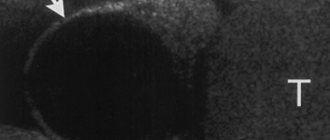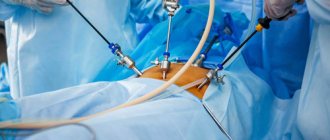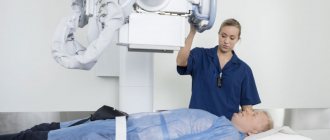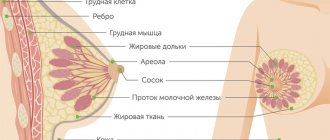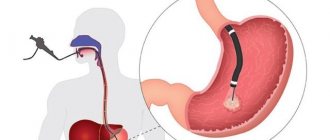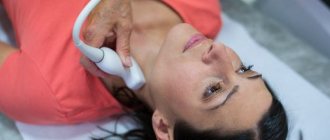What is hysterosalpingography
This procedure is a method of studying the patency of the fallopian tubes and uterus. This study is also called HSG. Hysterosalpingography is an informative method and is often used in gynecology. The GHA allows you to confirm or refute the following violations:
- obstruction of the fallopian tubes,
- malformations of the pelvic organs,
- the presence of neoplasms of various types (fibroids, polyps, endometrial cancer, adhesions).
This procedure is usually prescribed to women who cannot conceive a child.
Research methods
There are two ways
carrying out hysterosalpingography -
examination using X-rays and ultrasound.
Based on these methods, doctors can determine tubal obstruction or pathological intrauterine abnormalities.
During HSG, a small amount of contrast agent is injected into the uterine cavity and fallopian tubes using x-rays. During the procedure, doctors take several pictures in which you can see the condition of the pelvic organs.
In hysterosalpingography, a saline solution is injected into the uterus using ultrasound and a machine is used to examine the uterus and fallopian tubes.
The ultrasound examination method is considered the most preferable and safe, since during its conduct the woman is not exposed to harmful x-ray radiation.
The advantages of HSG using ultrasound include the following factors:
- no pain,
- this method does not cause allergies,
- The entire procedure takes only half an hour.
Where is it held?
The procedure is performed in the operating room and only in it
. Although this is an x-ray examination, it cannot be carried out in an x-ray room. This procedure must be carried out under sterile conditions, that is, the conditions must be the same as, for example, during operations on the heart or spine. Such conditions cannot be achieved in an X-ray room. Who sat in this place in front of you and with what illnesses? Therefore, only in the operating room.
If you decide to have an HSG done in our clinic, then the cost of hysterosalpingography (the price of the HSG procedure itself) is 10,000 rubles
.
The final cost of hysterosalpingography includes anesthesia and 3 hours of stay in our hospital, observation by doctors and nurses
and is
20,900 rubles
.
From October 1, 2021, the cost of GHA increases by 5,000 rubles.
Hysterosalpingography technique
The technology of both types of research is carried out according to similar principles. During hysterosalpingography using X-rays, the woman is given antispasmodics and sedatives half an hour before the procedure. They relieve anxiety, relieve muscle spasms and make the procedure easier.
The patient is positioned on the gynecological surgery table. The pelvis should be at the edge of the table, the legs should lie on special holders and bent at the knees. The doctor treats the external genitalia with a disinfectant. Using mirrors, the doctor exposes the cervix. A special syringe is used to inject 2–3 milliliters of contrast agent into the uterus, after which an image is taken.
At the second stage, 3–4 millimeters of contrast are again injected into the uterus. The pressure pushes the substance through the fallopian tubes. If they are passable, then the fluid passes through them and enters the abdominal cavity. At this time, the doctor takes a second picture. Thirty minutes later, a third x-ray is taken, if necessary. After undergoing the examination, the woman must lie down for 50–60 minutes.
If the study is carried out using ultrasound, then not a contrast agent is injected into the uterine cavity, but 80 - 100 milliliters of sterile saline solution. The doctor then performs a vaginal ultrasound examination.
Preparation for the procedure
A special contrast agent injected into the uterus is toxic. It can harm the embryo or cause fetal rejection. Therefore, throughout the entire cycle in which the procedure will be performed, the couple must be protected from pregnancy.
If a doctor examines a woman using x-rays, the following recommendations should be followed:
- From the beginning of the menstrual cycle until the day of the examination, the woman should abstain from sexual relations.
- the study is carried out in the first half of the cycle, on days 6–12 (preferably one day before ovulation) with a 28–30 day cycle. At this time, the endometrium is still thin, it will not be able to distort the condition of the uterus and tubes.
- Before hysterosalpingography, you should take a general blood test, blood for syphilis, AIDS and hepatitis, and a urine test to determine the cleanliness of the vagina.
- on the eve of the study, it is necessary to completely empty the intestines by doing a cleansing enema, or using other methods of bowel cleansing.
- In the morning, before the procedure, you should wash your genitals well, shave your pubic hair, and empty your bladder.
- The study is carried out on an empty stomach, it is allowed to drink no more than a glass of clean water without gas.
If hysterosalpingography is performed using ultrasound, then the woman follows similar recommendations. The exception is that the procedure is performed with a full bladder.
The research procedure is carried out without the use of anesthesia. It is not very painful, although it is unpleasant. If a woman has a high pain threshold, she should consult a doctor about possible pain relief methods.
How to prepare?
Preparation for the examination largely determines its informativeness and effectiveness. That is why a woman needs to strictly follow the recommendations given by the doctor.
Since the HSG procedure of the fallopian tubes has a number of contraindications, you should make sure that there are none.
As part of your preparation you should:
- Stop using vaginal tablets, suppositories and sprays for a week
- During the procedure, use contraception or refuse sexual intercourse to prevent the possibility of conception
Hygiene procedures should be carried out several hours before diagnosis. The study has nothing to do with food intake, so you should not limit yourself in food.
Since the HSG procedure of the fallopian tubes has a number of contraindications, you should make sure that there are none. To do this, the patient undergoes some tests.
Typically, a set of studies includes:
- Blood test for HIV, hepatitis and syphilis
- Flora smear
The exact list of studies will be announced by the doctor. In some cases, a preliminary ultrasound of the pelvic organs is performed.
On what day of the cycle is HSG performed?
The best period for hysterosalpingography is the period between menstruation and ovulation. Typically, the examination is carried out on days 7-12 of the cycle.

The best period for hysterosalpingography is the period between menstruation and ovulation. Typically, the examination is carried out on days 7-12 of the cycle.
When you can and should perform an HSG, your gynecologist will tell you. He will select the optimal day for diagnostics and answer all questions in advance. This will allow you to properly prepare for the examination and increase its accuracy.
Contraindications for the study
There are a number of contraindications to hysterosalpingography:
- pregnancy - contrast agent is dangerous for the development and life of the embryo,
- sensitivity to components introduced into the uterus - women may develop a severe allergic reaction,
- acute inflammatory processes occurring in the genitals,
- with 3 – 4 degrees of vaginal cleanliness,
- acute infectious diseases,
- vein thrombophlebitis,
- uterine bleeding.
Interpretation of GHA results
The images show how the contrast fills the uterine cavity, penetrating the fallopian tubes. If the patency of the fallopian tubes is normal, then the contrast agent passes through them, then it ends up in the abdominal cavity.
If the patency of the fallopian tubes is impaired, the contrast agent will fill them to a certain level. In this case, the doctor identifies an obstruction and prescribes further treatment.
Hysterosalpingography helps to identify not only obstruction of the fallopian tubes, but also confirm the presence of various intrauterine pathologies.
Indications
This diagnostic method is chosen by gynecologists for patients with suspicion and to identify various diseases and pathological changes in the uterine cavity.
Tubal obstruction
Pathology is one of the causes of infertility and occurs if there are congenital or acquired ailments in the anatomy of the tubes (after surgery or functional disorders).
Isthmic-cervical insufficiency - expansion of the cervical canal and its internal os to 5-7 mm
Premature pathological dilation of the cervix, causing spontaneous abortion or premature birth. ICI occurs with congenital malformations of the uterus, injuries received during childbirth, after surgery, with hormonal disorders, etc.
Anomalies of the development of the uterus and appendages
Anomalies and malformations of the uterus include any changes in shape, location, size, etc. Their presence leads to disruptions in the reproductive system and various functional disorders. Without treatment, problems can lead to infertility, pregnancy complications, and miscarriage. Most often, illnesses occur without symptoms, so a high-quality diagnosis is needed.
Submucous fibroids or synechiae (adhesions in the uterine cavity)
Myomas, synechiae and other intrauterine pathologies are often diagnosed as a whole group in one patient (almost all age groups). Pathologies have similar symptoms and require an integrated approach to diagnosis and treatment.
Adenomyosis, endometrioid cancer, polyps, genital tuberculosis
Various lesions of the uterine mucosa are usually associated with infectious or viral diseases, hormonal disorders, inflammation, etc. and serve as signals of serious problems in the female body. Polyps arise and develop against the background of pathologies such as cervicitis or cervical erosion. Adenomyosis affects other tissues of the uterus. Genital tuberculosis leads to cycle disorders, intoxication, infertility, etc.
Possible consequences of HSG
Complications from this procedure are quite rare. The main negative consequence is an allergy to the contrast agent injected into the uterine cavity and fallopian tubes. If the technology for conducting HSG has been violated, then the woman’s appendages may become inflamed.
Many experts believe that pregnancy occurs easier after hysterosalpingography. The procedure promotes the conception of a child and increases fertility in women. If there were no violations after the study, then the married couple can plan a pregnancy in the next menstrual cycle.
Sedation or local anesthesia?
HSG must be performed under sedation. Sedation
- This is not general anesthesia, which has very unpleasant consequences, but drug-induced sleep, which has no side effects.
Carrying out HSG under sedation is necessary because with local anesthesia (or without anesthesia at all), a person cannot completely relax, and this, in turn, does not allow the uterus to relax. As a result, an incorrect diagnosis may be made. That is, you will be squeezed, the contrast will not be able to pass through the uterus, and the doctor may decide that you have an obstruction. You don't want to get a wrong diagnosis, do you? This is why we perform HSG only under sedation.
so that you get the most objective picture possible.
Recovery period after the study
Recovery occurs within 3-7 days after the procedure. Women often experience bleeding that goes away after a week. Bleeding is due to the fact that the cervix is slightly injured during the procedure. They usually occur in women suffering from erosion. Patients may be bothered by pain in the lower abdomen, but they quickly pass without taking painkillers.
For 3 days after hysterosalpingography, women should not take hot baths and should refrain from visiting baths, saunas and sexual intercourse.
If you dream of becoming a mother, but you are unable to get pregnant, then you can safely contact the IVF Center clinic in Arkhangelsk. The specialists of our center will definitely help you. You will be advised by experienced and qualified doctors. Here you can undergo a full examination, do hysterosalpingography, and assess the condition of the pelvic organs. You will receive high-quality conservative treatment. If necessary, an IVF procedure will be carried out.
Necessary examinations before the HSG procedure under sedation (during sleep)
- complete blood count + platelets + ESR - valid for 2 weeks;
- biochemical blood test (total protein, glucose, bilirubin, ALT, AST, alkaline phosphatase - valid for 1 month;
- coagulogram (APTT, PTI, fibrinogen, INR) - valid for 1 month;
- blood type, Rh factor (on a stamped form, a stamp in the passport is not accepted) - valid for an indefinite period;
- HIV - valid for 3 months;
- Wasserman reaction - valid for 3 months;
- HBs antigen - valid for 3 months;
- HCV antibodies - valid for 3 months;
- ECG - valid for 2 weeks;
- Flora smear is valid for 2 weeks.
How to check patency if for some reason an HSG is not possible? Read about such methods below, but they are outdated and uninformative
. Therefore, we do not recommend resorting to these types of diagnostics, but we consider it necessary to mention them.

